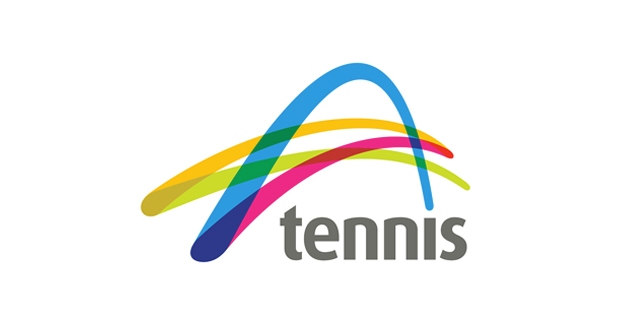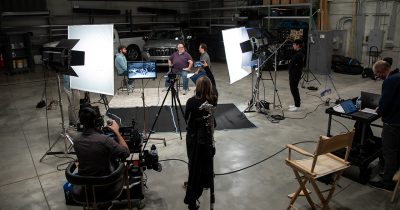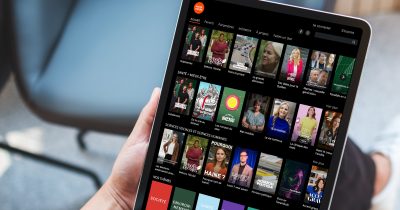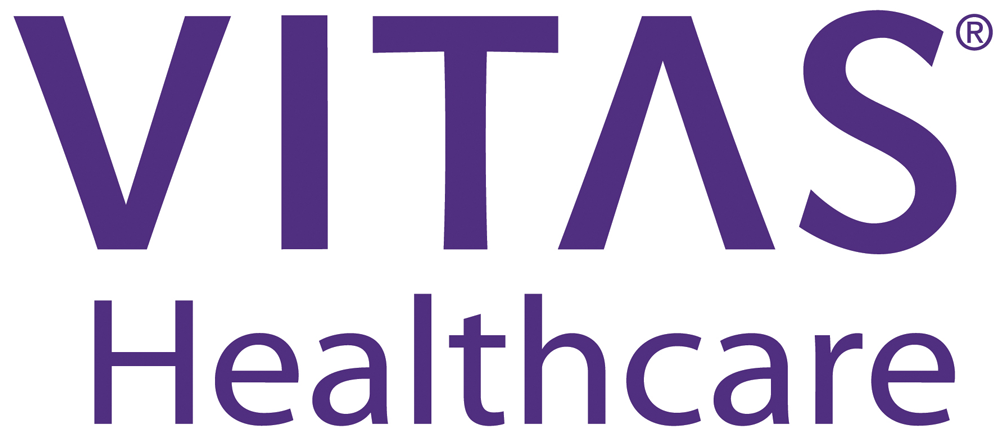Tennis Australia typically hosts up to 400 athletes for the Australian Open (AO). But with a cap on the number of international visitors permitted in the country, the team at Tennis Australia decided to run the men’s and women’s qualifying matches for AO 2021 in Doha and Dubai. That solved the travel problem, but it created a new one with time zones: If a match started at 5:00 PM Melbourne time, it would run until 4:00 AM the next morning – not great for viewership. And with the government’s COVID-19 restrictions, people who would typically be cheering from the stands would have to watch from afar.
So the team at Tennis Australia decided to view these obstacles as opportunities to think differently about video and create new experiences for tennis fans in Australia and around the world. “I suppose in a lot of ways, we just tried to remove barriers for our event – from a fan perspective on site, for our media, for our staff, and especially our fans consuming globally as well,” says Tennis Australia Supervising Producer of Live Events, John O’Neil. “We were looking at how to bring everything together so there’s a consistency and seamlessness in our video experience.”
CREATING A NEW VIRTUAL MEDIA HUB
There are three groups of people who are critical to any successful sporting event: the players, the patrons, and the press. Typically, Tennis Australia prides itself on catering to the needs of all stakeholders, and this year there were specific challenges for the international media, which mostly had to cover the entire event remotely. “In some scenarios last year, journalists were forced to watch local broadcasts or find local coverage of, say, the U.S. Open or the French Open, to then report on it and generate media exposure,” says O’Neil. “Our aim was to provide a seamless service and provide media around the world with the best possible access to every match. This gave us the opportunity to leverage our existing Brightcove investment and infrastructure as part of creating our Media Hub. We had a really strong and clear vision of what we wanted to achieve.”
By creating a new Media Hub video platform, Tennis Australia was able to replicate the access and experience media would have covering the event on site. In the Media Hub, journalists could watch live match footage on all 16 courts, livestream press conferences, watch behind-the-scenes content, and even participate in both press conferences and one-on-one interviews via Microsoft Teams, all from one centralised platform. “We were trying to create that ‘as if you were here’ experience for our media,” says O’Neil. “It has meant that if someone is covering a match on court 13 or court 16, or on a court that would not necessarily be on a terrestrial or OTT platform, they’re allowed to see it, talk about it, and provide commentary and coverage for it.” All in all, 1,200 broadcast journalists and 475 media representatives reported on the 2021 Australian Open from the Media Hub, earning Tennis Australia positive global coverage for supporting a group that’s key to the tournament’s success.
CREATING A NEW SPATIAL AUDIO EXPERIENCE FOR THE VISUALLY IMPAIRED
![]()
The Brightcove video platform allows us to do whatever we need it to, and with full confidence that we’re not going to break it. It’s that confidence in knowing that we can really stretch the system and it’s going to respond accordingly.
JOHN O’NEIL
SUPERVISING PRODUCER OF LIVE EVENTS, TENNIS AUSTRALIA
Dylan Alcott, an Australian wheelchair Grand Slam champion and Paralympic gold medallist tennis player, has become a prominent advocate for people who are mobility-challenged, helping to raise awareness and create more opportunities for inclusion in sports. Inspired by Alcott’s efforts, Tennis Australia’s innovation team leveraged Brightcove technology to create a 15-channel spatial audio experience specifically designed for people who are unable to see a tennis match. “We’ve also been looking at how else we can use Brightcove to deliver more inclusion and bring more people to sports in a different way,” says O’Neil.
CREATING A NEW TAKE ON A TRIED & TRUE PARTNER EVENT
As part of the Australian Open every year, Tennis Australia hosts AO First Serve, an event designed to engage partners and offer them a sneak peek into the tournament. Unable to host a physical event this year, the Tennis Australia production team filmed original content and stories in their studios and published the video through Brightcove across different time zones, enabling them to still connect with partners and showcase the event. “I think a picture tells a thousand words, and a video tells a million stories,” says O’Neil. “When you can show video content, it brings out the emotion and tells the story. And I think you can’t underestimate the impact of storytelling.”
CREATING NEW CONTENT OPPORTUNITIES FOR INTERNAL COMMS
Like many organisations, Tennis Australia has also undergone substantial changes in how internal teams communicate, collaborate, and work remotely – and that has meant more opportunities for video. “We’ve also made a lot of content for ourselves, to keep each other informed and communicate what’s happening,” says O’Neil. “We take our full-length video content, tighten it up, and then send it out to people through Brightcove.” Everything from the latest CEO town hall to COVID policy updates, cocktail tutorials to yoga classes, are all available for the Tennis Australia staff through the Brightcove platform. “Brightcove has helped us, as an organisation and as teams, to stay together when we’ve been working remotely.”
A LONG-TERM “LOVE” STORY
For years now, Tennis Australia has offered its audiences everything from livestreams to video-on-demand content, on both AusOpen.com and their mobile app, all streamed by Brightcove. “I suppose we’ve had a long-term relationship with Brightcove,” says O’Neil. With ambitious plans to continue to expand and create even more content opportunities, Tennis Australia relies on a partnership that has stood the test of time. “I know that Brightcove is a market leader; everything that we need is there, and the support we get is great, and it has delivered what we need it to deliver.”
During live sporting events, Tennis Australia will sometimes simultaneously livestream up to 16 courts for up to 14 hours a day. “We recently had probably the most ambitious day of tennis ever. We did 98 tennis matches in one day. Normally the Grand Slam is 64 matches. We did 98.” At this year’s AO, the organisation simultaneously streamed 16 match courts, one behind-the-scenes feed, two interview rooms, one world feed production, and two practice courts – clearly, reliability is critical.
Scalability is just as important. During a typical year, the production team might create one or two pieces of content a week, but when the AO rolls around, they’re suddenly pushing terabytes of data. “We don’t have the luxury of sporting organisations or sporting events that have months and months of a season and lots of content happening over that period of time,” says O’Neil. “The ability to go ridiculously hard for an intense burst of content, but then to be able to go back again is really important. So that’s one of the critical reasons why we chose Brightcove: that true elasticity to be able to grow, but more importantly to scale back down to our needs for the other 48 weeks of the year.”
According to O’Neil, it would be impractical for Tennis Australia to build a massive video infrastructure in-house, both in terms of time and money. Fortunately, they don’t have to. “The Brightcove video platform allows us to do whatever we need it to, and with full confidence that we’re not going to break it. It’s that confidence in knowing that we can really stretch the system and it’s going to respond accordingly.”
Tennis may be one of the world’s great individual sports, but we at Brightcove couldn’t be prouder to be part of the Tennis Australia team.








